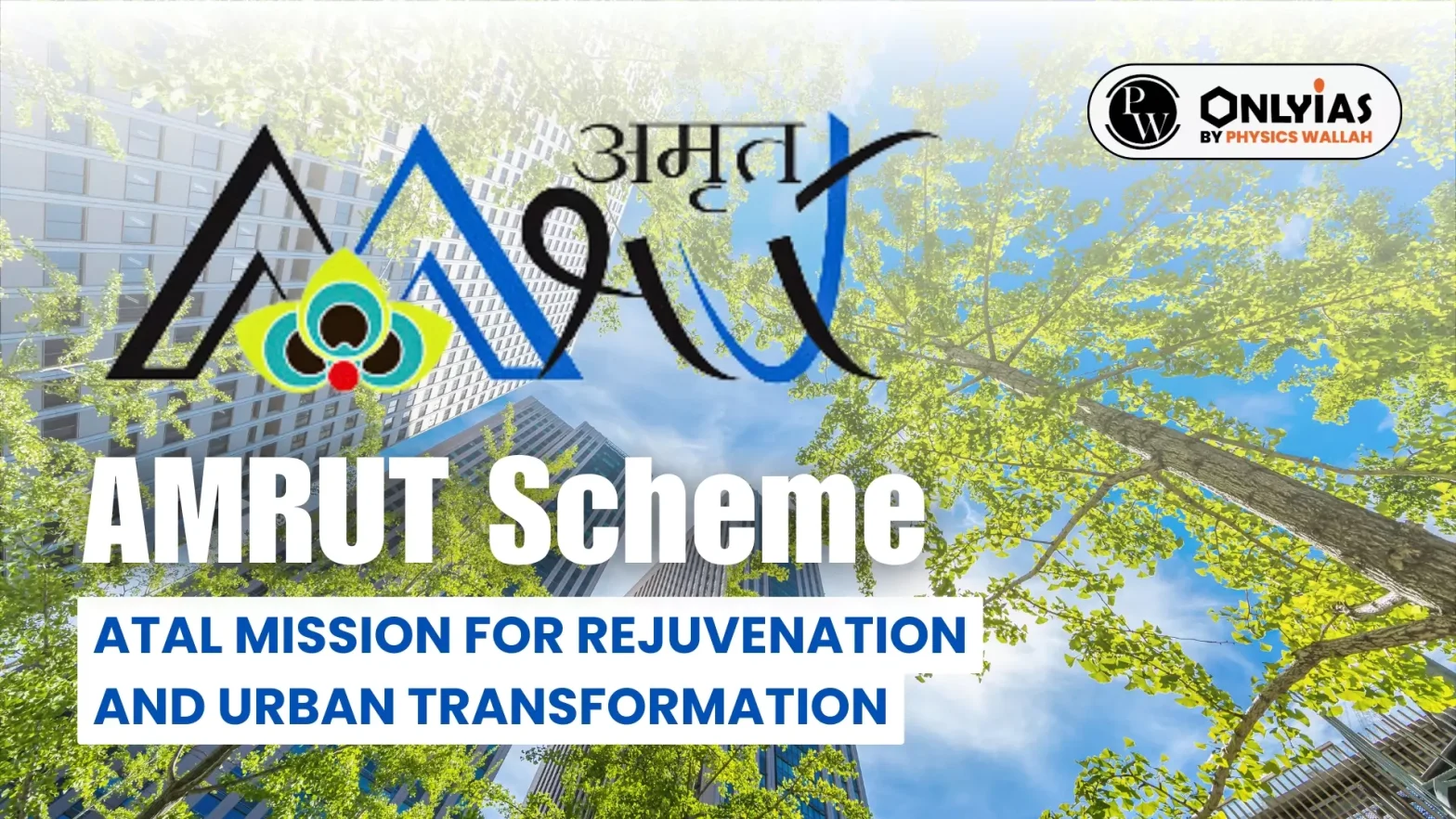By 2047, over half of India’s population will live in cities. The AMRUT scheme was launched to tackle the growing urban infrastructure demands.
AMRUT Scheme – Atal Mission for Rejuvenation and Urban Transformation
AMRUT Scheme is a Central Sponsored Scheme initiated by the Ministry of Housing and Urban Affairs on June 25, 2015.
- Purpose: Ensure universal access to water and sewerage, develop green spaces like parks for better city living and combat pollution with public and non-motorized transport.
- Components: The program includes capacity building, reform implementation, water supply, sewerage and septage management, stormwater drainage, urban transportation, and the establishment of green spaces and parks.
- Its objectives include improving citizen service delivery, reducing costs, enhancing financial sustainability, augmenting resources, and promoting transparency.
- Additionally, it involves replacing conventional street lights with LED lights.
- State Annual Action Plan (SAAP): AMRUT scheme ensures states are equal partners in planning and executing projects by having the Ministry of Housing and Urban Affairs approve the SAAP annually.
-
- States are responsible for sanctioning and approving projects locally, thereby promoting cooperative federalism.
- Supervision: The Mission is overseen by an Apex Committee (AC) chaired by the Secretary of MoHUA, including representatives from relevant Ministries and organizations.
- Total Outlay: The total outlay for AMRUT was ₹50,000 crore for five years from FY 2015-16 to FY 2019-20.
Enroll now for UPSC Online Course
AMRUT Scheme 2.0
AMRUT Scheme 2.0, launched in October 2021, extends over five years from the 2021-22 to 2025-26 fiscal years. It is an extension of the AMRUT mission initiated in June 2015.
- Objectives of AMRUT Scheme: The goal is to extend universal water supply coverage from the 500 cities included in the Atal Mission for Rejuvenation and Urban Transformation (AMRUT) to all statutory towns nationwide.
- Ensuring comprehensive sewage and septage management in 500 AMRUT cities, with the aim of making these cities “self-reliant” and “water secure”.
- The Mission aims to protect freshwater bodies from pollution to ensure the sustainability of natural resources.
- Budget: Total outlay is ₹2,99,000 crore, with a central outlay of ₹76,760 crore for five years, starting from October 1, 2021.
Achievements of the AMRUT Scheme
- Financial Utilization: As of May 19, 2024, a total of ₹83,357 crore has been disbursed under the AMRUT scheme, with contributions from the Central Government, States, and cities.
- Tap Connections: A total of 58,66,237 households now have tap connections, ensuring a reliable water supply.
- Sewerage Connections: 37,49,467 households have been linked to the sewerage system, enhancing sanitation and hygiene.
- Development of Parks: A total of 2,411 parks have been created, enriching urban green spaces and recreational zones.
- Street Lighting: 62,78,571 conventional street lights have been substituted with LED alternatives, promoting energy efficiency and improved urban lighting.
Challenges with AMRUT Scheme
- Health Crisis: Roughly 200,000 deaths occur annually due to insufficient access to water, sanitation, and hygiene.
- As of 2016, the disease burden from unsafe water and sanitation in India was 40 times higher per person compared to China.
- Water and Sanitation Concerns: The substantial presence of untreated wastewater heightens susceptibility to diseases.
- Major reservoirs, currently operating at only 40% capacity, pose a risk to water availability for drinking, irrigation, and hydro-electricity.
- Approximately 21 major cities are forecasted to face imminent groundwater depletion.
- Air Quality Concerns: Air quality in AMRUT cities and in other large urban settlements continue to worsen.
- A National Clean Air Programme was launched by the central government in 2019, as AMRUT 2.0 focused only on water and sewerage.
- Fragmented Approach: The AMRUT scheme embraced a project-centric rather than a holistic approach, neglecting to integrate comprehensive urban planning.
- For instance, cities lacked substantial involvement in both the design and execution of the scheme, diminishing its effectiveness.
- Moreover, governance was predominantly driven by bureaucrats and private interests, with limited engagement from elected city governments, contravening the 74th constitutional amendment.
- Water Mismanagement: The AMRUT scheme neglected local climate, rainfall patterns, and existing infrastructure, leading to inefficient water and sewage management.
- Urban planning prioritized real estate interests, resulting in the disappearance of water bodies, disrupted stormwater flows, and inadequate drainage systems.
Enroll now for UPSC Online Classes
![]() 1 Jun 2024
1 Jun 2024
